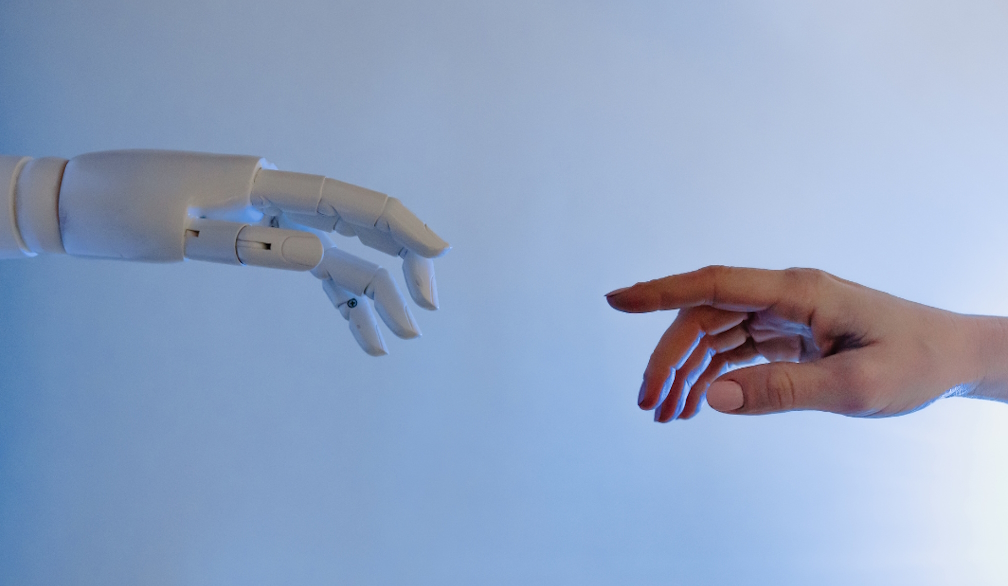North American Society, AI and the Technological Imperatives
- Written by Mohammad Momin Khawaja

What We Think of Technology?
When we think of technology, we often think of things which manifest as inventions and happen to make our lives easier and better. Some of these inventions are things that we have been accustomed to use so often that we cannot go without. A computer, an MRI machine, a mobile phone, the internet, a car, a watch, or even a television are all inventions that we correlate with being technology. The word technology though, may cover much more than that. Technology is a systematic and rational way of doing things.(1) Technology is the organization of knowledge, people, and resources needed in order to accomplish specific practical goals. Therefore, a technological invention such as an automobile, a computer or even a microscope is not something that is simply added on to a society.(2) Rather, these inventions transform society.
Conception of Technology
There are various elements which make up the concept of technology. Most technologies share common elements which give context, structure, and meaning to the organization of knowledge, people, and resources. These common elements found in technology come to include:
-
Know-how, and ways of doing things.
-
Tools which extend and enhance human capacities.
-
Artifacts which are made, and then can become tools for making new things.
-
Usage of these artifacts, the needs that they fill, and the needs that they create.
-
Scientific knowledge that is created and transformed in the process.
-
The social contexts in which the technology is employed, and the social constructs which result from it.
It is of particular importance in many of the moral debates which stem from the uses to which technology is put, the needs and desires it serves, and the needs and desires it creates.(3) This may be simplified in being the social construct of consumer needs, and consumer demands. The ethical questions which arise include that should we use this technology? Why do we want to do this? Whose interests will be served? Whose interests wil be harmed? How will this technology affect us as individuals, as a society, and even as a species? These are all ethical questions whose answers depend on social goals and values rather than on scientific knowledge and capability.
Scientific Knowledge to Develop Technology
Scientific knowledge and capability in the development, testing, and deployment of technology are a means to agree upon in order to reach certain goals or ends.
Social and ethical problems in relation to technology arise when the development of fechrcieey is an end in itself. When this occurs, the use and potential impacts of a technology become secondary, and the pursuit of technological capability becomes the only goal.(4)
Thus, knowing how becomes more important than knowing why. In ethics, this concept is known as the technological imperative. That is, developing, using and deploying technology just because it exists and we are able to do so.
A good example of the technological imperative is found in Al technologies. That is, the ability of a computer system or a computer-—controlled robotic sysem to perform tasks which are commonly associated with intelligent beings.(5) Al development includes developing systems endowed with the intellectual processes characteristic of humans.(6) These intellectual processes come to include the ability to reason, discover meaning, generalize, or even learn from past experience. (7)
Recent R &D process in generative Al has led to developments which allow consumers to make deep-fakes of just about whatever type of digital content. This type of technology is being used by students, academics, artists, musicians, journalists, medical practitioners, lawyers, and many others in various professions towards positive and negative outcomes. Al technologies certainly have the ability to make humans faster, better, and efficient.
There are also experts whose concerns are focused on the existential risk to society that Al development and technologies pose to humanity. The idea of mortals being made extinct by machines has long been a myth and fiction. Yet, if such Al technology development continues to expand at an exponential rate, we are then faced with questions which have never before arisen or really answered. These questions in relation to ethics would include what could this mean for humanity?
Is this desirable? Who would benefit from it? Who would be harmed by it? What would the socio—biological impact on how we study, work, socialize, and make important decisions in life?
Do people even want to have machines with intellectual processes characteristic of humans? In retrospect, many thinkers believe that our ethics have not kept pace with our technological powers. Although we now know how to do certain things, we don’t really know why we want to do them, should we ought to do them, do we have a right to do them, and is it in the best interest of humanity to do them?
-
Collier, Carol and Halliburton Rachel, “Bioethics: Human Life Issues”, University of Sudbury, Sudbury, Ontario,
2006. _
2. Ibid.
3. Ibid.
4. Ibid.
5. "artificial intelligence (Al) ." Encyclopzedia Britannica. Encyclopaedia Britannica Ultimate Reference
Suite. Chicago: Encyclopaedia Britannica, 2013. i : :
6 Ibid.
7 Ibid.
Mohammad Momin Khawaja is a Sociologist and a Journalist: Member of the Canadian Sociological Association (CSA), and Member of the International Center for Journalist - ICFJ Global Network, Washington, D. C. USA. A graduate of Laurentian University in Sociology, he writes on current issues of social justice, criminology, philosophy, ethics, history and problems of social welfare system and human development. He is author of numerous publications including, Women in the Ancient World (Lambert Academic Publication, 2023), and his latest book under publication is: Philosophy and Ethics - Dilemmas of Modern Philosophy and Ethics. He recently published: “North American Colonization of Indigenous People, Cultures and System of Social Welfare.”
:https://www.uncommonthought.com/mtblog/archives/2023/05/26/north-american-colonization-of-indigenous-people-cultures-and-system-of-social-welfare.php.

















